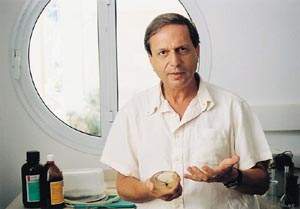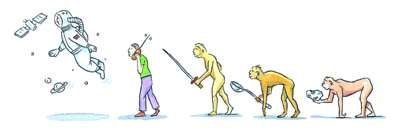Are you a journalist? Please sign up here for our press releases
Subscribe to our monthly newsletter:

If one could imagine the history of humanity as an ascending staircase, then each step would be of a different material, reflecting the life of those living at that brief moment in time. From the Stone Age, to the Bronze Age, to the age of silicon and the birth of computers, and finally, to today's era of complex materials. This is how Dr. Sariel Shalev of Haifa University sees materials - as a mirror of culture.
Retracing life in the distant past calls for a highly scientific approach stresses Shalev, whose training includes bachelor's and master's degrees in Biblical archeology and a Ph.D. in archeological material sciences. 'Take early metals, for instance, which represent ancient hi-tech. Astute examination of early metal findings could tease out a world of information. Israel has many findings that are catalogued according to material, site, or estimated era. But most have not been analyzed for further key information. It's no more than a historic or intuitive assumption, for instance, to decide that a pot found in an archeological dig was used for cooking unless we perform a lipid analysis.' (Lipids are a diverse group of organic compounds that, among other functions, make up the cell walls of living organisms.) 'And the same goes for a metal dagger. How can one determine whether it was used for butchering or to cut vegetables? Maybe for both?
Holding an archeological finding, Shalev, currently working at the Weizmann Institute's Scientific Archeology Center headed by Prof. Steve Weiner, tells its history. It started out as a raw mineral, but after being artificially exposed to some form of thermal activity changed into a different substance with new mechanical and thermal properties. Despite its eye-catching shine this rock may have lain around for centuries - prior to the Chalcolithic period (4500-3500 B.C.) people had no clue that some rocks, rich in copper or arsenic, for instance, could be transformed into metal. But once this knowledge had been uncovered, it was widely used to craft metal objects. After several years of use this particular object was lost or buried, and since then it has interacted with its environment for thousands of years, during which it gradually corroded, changing back to a mineral state.
'By understanding the abilities and knowledge (chemical, physical, etc.) needed in tool-making, one can reconstruct essential parts of social and economic systems,' says Shalev. 'Metal findings, for example, offer a window to the social and cultural changes occurring in Israel during the transition from the fourth to the third millenium B.C., when urbanization began.'
At times however, solid scientific data can spoil quite a good story, Shalev admits. The British museum has a sword on display, known as the 'Philistine Sword,' which is more than a meter long. Found at an excavation site near today's Beit Dagan, it was long considered the only example ever found of a weapon produced by the legendary 'sea people,' who occupied Israel's southern coastal region toward the end of the second millenium B.C. Whoever wanted to demonstrate what David had to face in his epic fight against Goliath would make reference to this sword.
However, in his research, Shalev found that during the early Iron Age, when the Philistines lived in the region, all the copper based metals contained a certain amount of tin, ranging from small impurities to a deliberate addition of up to 13 percent. 'This is the era's reference stamp all over the ancient Near East,' says Shalev. 'But in analyzing the sword, we found that in addition to copper, it contained 5% arsenic and not tin - a practice belonging to the beginning of the Middle Bronze Age, more than one thousand years before the Philistines.' This finding also correlates with the sword's shape, which is very similar to swords and daggers from the intermediate period between the Early and Middle Bronze Ages and proves that the sword has nothing to do with Goliath of the Philistines.
Shalev is currently focusing his attention on developing new archeological research tools, including a project with Dr. Oded Haver of the Institute's Particle Physics Department. The project targets the use of a particle accelerator, used today to study a range of questions at the forefront of physics research, to tap into the pulse of ancient societies still hidden in untold archeological findings.
